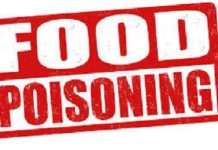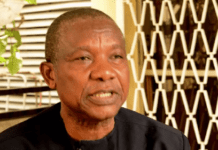By Pharm. Nelson Okwonna
The recent Samsung-Apple saga has given us ample opportunity to discuss and reflect on the roles of intellectual property, in an increasingly knowledge-dependent economy. We are getting more familiar with the word “patents”. Though patents and other intellectual property have played very important roles in the development of global economies, in many parts of Africa, they are still not very much understood.
Our academic curriculum, somehow, is deficient in the aspect of knowledge management and this is very worrisome. It is worrisome because it is difficult to drive sustainable development in a global economy, without a proper understanding and application of intellectual property protection and commercialisation.It is quite laudable that a good education should equip us to perform specific defined functions; however, it is more laudable when education empowers us to create.
For every resource available to man, the application of knowledge is what would expand its value. We go to school to be taught, crude oil needs to be refined, sand has to be made to silicon, words can become codes and a couple of good ideas can give you an IPad. This application of knowledge to increase value is what patents seek to achieve. It thrives on the wheels of self-belief. Those that engage in development endeavours must first believe in themselves, because protection of intellectual property requires that an individual possesses a certain body of knowledge which he values enough to protect his right to it.
DEFINITIONS
According to the World Intellectual Property Organisation (WIPO), intellectual property refers to creations of the mind. Intellectual Property Right (IPR) therefore, refers to property rights on the creations of the mind. IPR is generally divided into two main categories – industrial property and copyright.
Industrial property refers to patents for inventions, trademarks, geographical indications and industrial designs. Copyright, on the other hand, includes literary and artistic works, musical works, novels, poems, plays, films, drawings, paintings, photographs, sculptures, computer software, databases, and architectural designs.
We shall focus more on patents; a patent is a contract between the government and an inventor. In exchange for the disclosure of the invention, the government grants the inventor exclusivity, regarding the invention, for a specified amount of time. The normal time duration is between 14 and 20 years.Patent protection means an invention cannot be commercially made, used, distributed or sold without the patent owner’s consent.
To be patentable, the invention must satisfy basic requirements. These are:
- Novelty – The invention must be new and not known in the body of existing knowledge. This body of existing knowledge is called the “prior art”.
- Inventiveness – It must show an inventive step and be non-obvious to an ordinary person skilled in the field of knowledge, and
- Industrial applicability – It must be capable of industrial application (usefulness).
In addition, the subject matter of the patent must be accepted as “patentable” under law.
In many countries, scientific theories, mathematical methods, plant or animal varieties, discoveries of natural substances, commercial methods or methods of medical treatment (as opposed to medical products) are not generally patentable.
NIPRISAN™
A case study of this is with the patent for NIPRISAN™.NIPRISAN™ is a herbal formulation for the management of sickle-cell disease(SCD), developed by indigenous researchers at the National Institute for Pharmaceutical Research and Development (NIPRD), Abuja, Nigeria. The patent for the formulation was filed on the 21st of January 1997 with the Office of the Commissioner of Patents and Trademarks, United States of America. The patent was approved in September 1998 with US Patent No. 5,800,819.
NIPRISAN, as claimed in the patent, is a herbal mixture extract, formulated from parts of four different indigenous plants (Piper guineenses seeds, Pterocarpus osun stem, Eugenia caryophylum fruit and Sorghum bicolor leaves) and an inorganic material mixed at specific ratios which has been shown to be safe and effective in the management of sickle cell disease, during a phase 1 and subsequent Phase 2 clinical trials.
The patent was filed for the process of formulating the preparation and not for the plants themselves as plants are not patentable by law.
FILING A PATENT
Patents are usually filed by patent lawyers, patent agents or patent consultants. A typical patent application has to be filed with a patent office. The fees charged by the patent office are usually not high. It is also normal to pay slightly more for the lawyer or agent who drafts the patent application. A maintenance fee is also paid at designated times within the life course of the patent; the same applies for trademarks.
In Nigeria, an application for patent is typically filed with the Registry of Trademarks, Patents and Designs, Federal Ministry of Trade and Investment. Once the application meets the formality set forth by statute, a patent certificate is issued in due course to the inventor or assignee. As noted above, an application for patent protection can and may be prepared by attorneys or agents.
A patent application must contain a complete history and description of the invention as well as claims for its usefulness. In general, the application is divided into;
- Title and Indication– this contains the background, novelty and indication of the technical field of invention.
- Description of invention – detailed description of the invention with drawings if available. This will include engineering specifications, materials, components and any other process that are vital to the actual making of the invention.
- Claims – this is the most important part of the application as it categorically states what the inventor is trying to patent. It is also the basis for determining infringements.
In Nigeria, patents are issued on a first-to-file basis and, when a patent is filed, an application number is given before approval. Once the application process is complete and filed, the status of the invention is subjected to the review and the applicant can assert a “patent pending” designation, implying that an application for patent protection has been filed on the subject invention. This status provides protection for the applicant until the application is approved or denied. On approval, a patent notice is published and is made available to the public for review.
The Patent Cooperation Treaty (PCT) – with over 100 participating nation states – was established to allow patent filing in multiple countries to be made in one office rather than filing in each separate country. A patent that provides protection in a particular country can be transferred to a different nation upon application to the relevant body.














Howdy! Do you use Twitter? I’d like to follow you if that would be okay. I’m absolutely enjoying your blog and look forward to new posts.|
Hurrah, that’s what I was exploring for, what a data! existing here at this web site, thanks admin of this web site.|